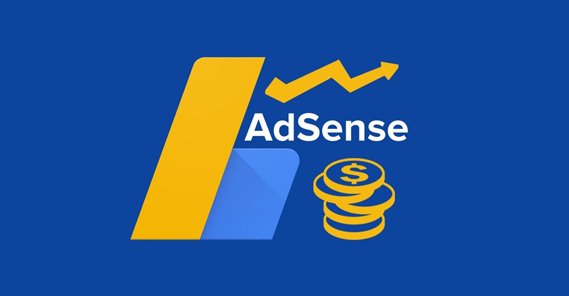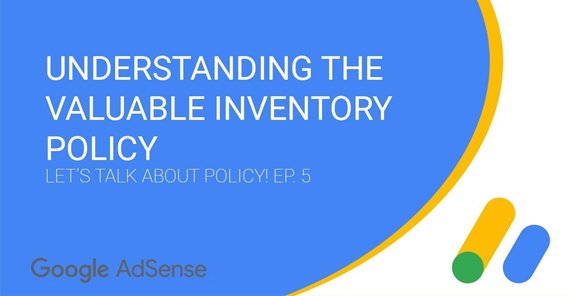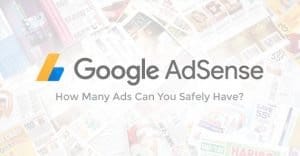How to Use Google AdSense and Other Ads Simultaneously

Before we begin, I find that there’s a lot of confusion as to whether an ad-related topic is focusing on the publisher perspective or the advertiser perspective. Some topics are easy to identify; if I’m talking about the cost of ads, I’m talking about the advertiser side. If I’m talking about your earnings, it’s probably about the publisher side of things. Google sort of helped with this by keeping a separation between AdSense and AdWords as the publisher and advertiser sides, respectively, but they’ve been rolling them into Google Ads for branding purposes.
In any case, what I’m talking about today is AdSense, the publisher side of things, and the publisher side of other ad networks as well.
Like all things with Google, ads can be pretty complex. The list of ad policies for AdSense is a mile long, and there are a whole lot of different restrictions, guidelines, and placement policies for different kinds of ads as well. Let’s talk about how AdSense combines with other ad networks, and see where we stand.
Can You Use AdSense With Other Ads?
This is a pretty common question. Can you use Google AdSense ads on your site alongside ads from other ad networks? The answer is yes.
There are no restrictions in AdSense relating to the number of ad networks you can use on any given page. If you want to run ads from AdSense, ads from Adsterra or the other alternative networks, affiliate links, self-serve ads, or whatever else, you can. Google doesn’t care.
What Does Google Care About?
Google actually has a lot of different policies relating to ads that may be limiting your ability to use other ad networks. They don’t explicitly say “hey you can only have three ads on your page”, because they know there are different layouts for ads that can be reasonable. One site with three ads might be very unobtrusive, while another might have three large banner ads stacked on top of each other directly above the content, pushing it below the fold and making the site much less user-friendly.
A lot of it comes down to your placement, so here are the guidelines for ad placement, in summary form:
- You are not permitted to place ads in a location that encourages accidental clicks. Accidental clicks can get your AdSense account banned, and there’s no way to recover from that ban.
- You are not permitted to use site design elements to draw undue attention to ads. None of those arrows that point to ads, blinking banners highlighting ads, or weird animations drawing attention to them.
- You are not allowed to label your ads in a way that is misleading, like “support us by clicking an ad” or “helpful links”. Anything that directly encourages users to click on ads is not allowed, and anything disguising the fact that they’re ads is bannable.
- You are not allowed to place images aligned to look like they’re associated with non-image ads. Using a text element and then using CSS to align some images to make them look like image ads is misrepresenting the content of the ads and usually makes advertisers very angry.
- You are not permitted to run ads in a layout that pushes content below the fold. If a user loads the page and all they see is ads and maybe your article headline – alongside your navigation – that’s a very poor user experience. Typically a responsive design will solve device issues that cause this, so if you have too many ads pushing content down, you need to move or remove some of them.
- You cannot offer any compensation for clicking ads. Absolutely nothing. Remember that bit about encouraging clicks? Incentives are very much in that category and can get your account removed.
- You cannot put ads in an element that refreshes itself automatically. Infinite scrolling pages can load new ads, but they can’t then refresh the other ads on the page; this would cause additional views for those ads, which throws off all the numbers and can be considered view fraud.
- You cannot place ads on exit-intent windows, log-in windows, or error pages. Anything that isn’t visible when the user loads the page cannot have an ad in it.
- You cannot place ads in dynamic content, like chat windows or within software. If you want ads in an app, Google has ads that can do that, through AdMob.
- You cannot put AdSense ads in emails. You can’t slip one by Google either, unless you just refuse to send emails to the entire Gmail domain.
- You are not permitted to put AdSense ads in pop-ups, pop-unders, in software, or in new windows.
Additionally, while you can put ads on a site that uses pop-ups or pop-unders, the site cannot have more than three such additional windows spawning. Google knows that such techniques are effective enough that they can’t ban them completely, but they can ban excessive use of such techniques.
None of that directly mentions the number of ads that can go on a single page, so we have to dig a little deeper for that information.
Types of Ad Unit
AdSense has a bunch of different styles of ad unit, depending on how you look at it. I’ve seen some people divide them into three categories: display units, link units, and native units. I’ve seen others include search units. Given that Google themselves divide them into five categories when giving examples, that’s what I’ll be using for the moment.
If you want a deep dive into the variety of different ad sizes you can use with Google AdSense advertising, you can check out this page, which shows you all of the most common sizes with images so you know precisely what you’re looking at.
The type of unit you use doesn’t actually matter to Google in terms of ad density restrictions. They don’t say “oh you can only have three display ads but you can have up to five text ads.” Ad density is controlled entirely by their Valuable Inventory Policy.
The Valuable Inventory Policy
If you’re wondering why you remember there being a fixed number of ads you can run on a page, and why I’m not mentioning those numbers now, it’s because they changed a few years ago. Google changed their policies in 2016, to move away from fixed numbers, because as always, webmasters ruin everything.
Basically, if Google says “you can only have up to five ad units on your page”, webmasters read that as “you can pack five ad units into your page” and disregard any other considerations. The letter of the law is more important to them than the spirit of the law. They’ll happily make pages virtually unusable as long as they comply with the rules just right.
So, in 2016, Google decided they had enough and decided to roll out a more blanket policy that generalizes the rules and leaves them more up to interpretation. This gives webmasters more design flexibility, while also allowing them more leeway to program their algorithm. The algorithm can now make judgments for ads based on their density and position.
The Valuable Inventory Policy is their solution. Here’s what it says:
“Advertising and other paid promotional material added to your pages should not exceed your content. Furthermore, the content you provide should add value and be the focal point for users visiting your page. For this reason, we may limit or disable ad serving on pages with little to no value and/or excessive advertising until changes are made.”
Examples of unacceptable pages include mirroring pages, putting pages in frames with ads on them, rewriting or scraping content from other sources with no added value, pages with more ads than content, pages with automatically generated content with no curation, pages with no content besides ads, and pages that don’t meet the webmaster quality guidelines.
This includes all ads on the page. You must have at least as much content on your page as you have ads, and this goes by screen real estate, not by word count. It includes all AdSense ads as well as all non-Google ads. You can use 5 Google ads and 2 non-Google ads, as long as they’re tastefully positioned and are not obstructing content. You can also use 2 Google ads and 5 non-Google ads in the same way. Again, the focus is on content, with advertising taking a secondary role.
The fact is, the more content you have, the more ads you can support. One of the main arguments in favor of this new policy is the advent of websites that scroll forever, loading more content as they go. If Google enforced a 3-ads-per-page max or whatever, users would quickly be able to scroll down past where the ads are, giving you a lot of user traffic with no way to monetize it. Infinite scroll sites are allowed to load more ads as they go, as long as those ads are still in a reasonable proportion compared to the primary content of the site.
Other Limitations
One thing you may need to concern yourself with when you’re running ads from more than one ad network is any limitations imposed by those other networks. Not all networks are as forward thinking or as adaptable as Google tends to be, and as such, they may have policies that they copied from Google in 2005 and have not updated since. Make sure to check policies for any individual ad network you want to use in conjunction with AdSense.
Another restriction you have will be the viability of your ads. Remember that ads will perform differently whether they’re above the fold or below it, and where they’re positioned on the page. They also have to compete with each other, as well as banner blindness.
There’s a point of diminishing returns, and that point varies depending on the website. If you tend to have relatively short content, having a small number of ads is probably better. If you tend to write lengthy case studies and longer content, you can fit in more ads without decreasing the viability of each of them.
Keep in mind the different kinds of ads you’ll be running as well. Affiliate links – which need to be disclosed as per the US Government guidelines and similar regulations around the world – may be valuable, but they do still count as ads, and Google can identify them even if you use redirects to hide them from your users. In-stream video ads also count against your ads level, though they’re going to be based on the play time of the video, not of the screen real estate used to display them.
Above all, the user experience is paramount. If you have so many ads that your users are leaving the page in disgust, or reporting the ads as spam, or are otherwise taking action to avoid them, you probably have too many ads. You want your users to engage with your content, and experience ads on the side. Adding more and more ads to counteract declining engagement rates on your ads will only accelerate the total collapse of your audience.
Pretty much every Google policy since 2011’s Panda update has been focused on improving the experience for web users, so as long as you keep that in mind at all times, you should have a good idea of what your limits are. Keep your users happy, and Google will be happy enough to reward you.

 ContentPowered.com
ContentPowered.com









